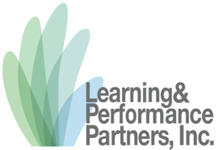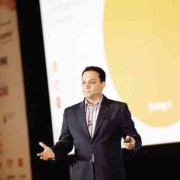Where Are the Nurses? The Impact of Nurse Migration on Medical Tourism in the Philippines
In the past few years, the Philippine government has been promoting the country as a major destination for medical tourism not just in Asia, but in the world. Yet eight years after the launch of the PMTP, has the country actually realized its full potential as a medical tourism hub?
A 2013 discussion paper, entitled “Medical Tourism in the Philippines: Market Profile, Benchmarking Exercise, and SWOT Analysis” by the Philippine Institute for Development Studies (PIDS) says otherwise. The paper, which studied data collated from online research, found that the Philippines lags behind Southeast Asian neighbors Thailand, Singapore, and Malaysia. The data is based on visitor numbers for medical tourism in 2010. This, despite the country offering a similar suite of medical treatments as its ASEAN neighbors and at competitive prices.
The paper cites a number of reasons for this, including some of these woes shared by the greater tourism industry, such as insufficient infrastructure and security issues. However, one concern that the PIDS cites is related to the exodus of trained healthcare workers overseas.
The Global Competition for Talent
Filipinos comprise a sizeable chunk of the world’s healthcare workers. A Philippine Daily Inquirer article published last February 2014 quotes Health Secretary Enrique Ona as saying that around 177,414 Filipino nurses are employed overseas. This outnumbers those working locally by around 4 to 1, or a total of 38,488 nurses.
This statistic is in stark contrast to the number of nursing graduates that the country produces every year. As quoted in a January 2013 article on GMA News Online, Dr. Marilyn Lorenzo of the UP Manila College of Public Health estimates that the country produces 100,000 nursing graduates every year.
So where are all the nurses?
Despite the high number of graduates, only 30.94% of examinees passed the Nurse Licensure Examinations (NLE) last December 2013. This is equivalent to 10,977 out of 35,475 who took the exam.
It is right in the neighborhood of previous years’ results: the December 2011 NLE only had a passing rate of 33.92%, while only 35.25% of examinees passed the December 2010 exam. This reflects how a good chunk of nursing schools are unable to truly prepare their graduates for the rigors of the nursing practice.
Underemployment or Unemployment?
And for those who do pass, local employment prospects are scarce. According to the Private Hospitals Association of the Philippines (PHAPi), the country needs 100 new hospitals—equivalent to 100,000 beds—in the next three years to address the healthcare needs of the Philippine population alone. This brings home the reality that there are not enough facilities to accommodate medical tourists, and that there are also few opportunities for nurses to seek local employment.
The lack of hospital facilities reflects a vicious cycle. With a glut of candidates, local hospitals end up selecting nurses who already have the right skills and work experience. As such, nursing graduates either end up pursuing careers in the BPO sector or are forced to seek work experience in different ways.
An article published by BBC News in 2012 narrates how a nurse ended up working as an unpaid volunteer for years at a local hospital, despite having finished certifications in specialist areas, just to gain work experience.
Challenges in Employee Retention
However, the tight competition for local work opportunities does not automatically mean that hospitals get to keep the best and the brightest of their nursing staff. After gaining enough experience, many decide to move on to overseas jobs due to higher pay, a concern expressed by the PIDS paper.
This fear is echoed by PHAPi President Dr. Rusty Jimenez in a report by the Manila Bulletin. He notes that more experienced healthcare professionals choose to work overseas instead of locally due to pay disparities. This trend is expected to accelerate once the 2015 ASEAN integration relaxes employment restrictions in the region.
And it is a fear with sufficient basis: POEA reports that 16,404 professional nurses left the country as new hires in 2013. This is more than the number of the December 2013 NLE passers.
With more experienced nurses leaving for greener pastures, the country is left without experienced nurses. Not only are these nurses the first choice to provide expert care, they can also serve as mentors for the newer generation.
Accreditation as Top Draw
The inability to retain and train nurses is also a black mark against local hospitals who seek international accreditation. The PIDS paper shows that only three local hospitals have earned the coveted Joint Commission International (JCI) accreditation, which places them on par with major hospitals around the world. For other hospitals who want to earn this accreditation, they must be able to meet several standards that require them to develop and implement processes for staff training and retention.
Another sought-after international accreditation, the Magnet Recognition Program by the American Nurses Credentialing Center, puts an emphasis on professional growth of and support for staff. It is also only awarded to facilities that have low turnover rates.
If existing Philippine healthcare facilities—especially public ones—are unable to train and retain nurses, they will be also unable to gain these accreditations that make them attractive options for medical tourists.
Lack of Marketing
But accreditation alone is not enough to attract medical tourists. The PIDS report also notes that local healthcare facilities are not able to properly market their skilled workforce. This, despite the fact that many of the healthcare institutions overseas that medical tourists patronize most probably employ Filipino nurses who gained experience here.
There is also a lack of marketing the soft skills that Filipino healthcare workers have, such as their touted ability to be caring.
It then creates another dangerous cycle: by not marketing the world-class skills and competency of their current healthcare staff, hospitals will not be able to attract medical tourists. Without medical tourists, hospitals will lose the chance to serve more clients and earn more. By losing the opportunity to earn more, hospitals then lose funds that can be used to train and retain staff, or even to upgrade facilities.
As these challenges show, there is more to developing the Philippine medical tourism industry than just ensuring the right infrastructure in place. Policy makers and private sector partners must also ensure that they also develop the human resources that power this industry. After all, patient care should still be the main focus of the healthcare industry, especially for medical tourists.
——————
This article is part of a series by Learning & Performance Partners, Inc. Here, we aim to examine how today’s talent economies impact everyone, from individual employers to entire industries. As such, we offer workshops to train and certify senior HR practitioners as Talent Economists. With this knowledge and certification, HR practitioners will be fully equipped to help their companies attract, train, and retain top professionals in today’s war for talent.











